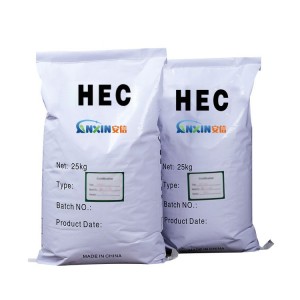Hydroxyethyl cellulose (HEC) is a chemically modified, nonionic, water-soluble cellulose ether widely used in coatings, building materials, cosmetics, detergents, and oil drilling fluids. Because it is a natural cellulose derivative stabilized by an etherification reaction, it possesses excellent chemical stability and microbial resistance, resulting in a relatively long shelf life.
1. Typical Shelf Life of Hydroxyethyl Cellulose
Unopened, dry, sealed, and stored away from light and at a low temperature, the shelf life of hydroxyethyl cellulose is typically around two years. Some high-purity, low-moisture industrial-grade or consumer-grade products, if stored under optimal conditions, can even remain stable for over three years without significant degradation. However, in the cosmetic or pharmaceutical industries, to ensure quality and safety, manufacturers generally recommend use within 24 months of the production date.
2. Factors Affecting Shelf Life
2.1. Storage Humidity
HEC is somewhat hydrophilic. High humidity will cause it to absorb moisture and form lumps, slowing its dissolution rate and even affecting its viscosity. Storage humidity should ideally be kept at ≤50% RH.
2.2. Temperature
Extended exposure to high temperatures (>35°C) may accelerate degradation, resulting in decreased viscosity and darker color. The recommended storage temperature is 5-30°C.
2.3. Lighting
Ultraviolet rays can accelerate oxidative degradation of the molecular chain, degrading product performance. Therefore, it should be stored away from light, especially in transparent or translucent packaging.
2.4. Packaging Sealability
Damaged or loosely sealed original packaging can easily absorb moisture and airborne impurities, shortening its shelf life. Unused HEC should be promptly sealed and air removed from the packaging as much as possible.
2.5. Product Purity and Frequency of Use
High-purity HEC is more stable than products with more impurities. However, frequent opening and handling may introduce moisture or microorganisms, shortening its shelf life.
3. Recommended Usage After Opening
Hydroxyethylcellulose should be used within 6 months after opening. Store in a dry, cool place and use dry tools to avoid moisture. If it clumps due to moisture, even if it dissolves, it may cause unstable solution viscosity or the presence of insoluble matter.
4. Performance Changes After Expiration
HEC will not necessarily lose its effectiveness immediately after its recommended shelf life, but its performance may change as follows:
Loss or fluctuations in viscosity
Slower dissolution rate
Slight yellow discoloration
Weakened thickening effect in the formulation
For applications with critical performance requirements (such as pharmaceuticals and fine cosmetics), avoid using expired material. For applications with lower performance requirements, such as general architectural coatings and oilfield drilling fluids, viscosity and appearance tests may be performed first and only after passing the test.
5. Storage Methods to Extend Shelf Life
Maintain the original sealed packaging and avoid frequent opening.
Store in a cool, dry place away from heat and moisture.
For long-term storage, consider enclosing the packaging in a moisture-proof bag and adding a desiccant.
Maintain good ventilation in the storage area and avoid direct sunlight.
Hydroxyethyl cellulose in industrial and consumer chemical applications generally has a shelf life of two years. The key is to maintain a dry, light-proof, sealed, and properly stored environment at an appropriate temperature. Even after the expiration date, it can still be used in some non-high-risk applications as long as it passes performance testing. However, for formulations requiring stringent quality stability, it is recommended to strictly adhere to the manufacturer’s recommended cycle to ensure the quality and safety of the final product.
Post time: Aug-14-2025








